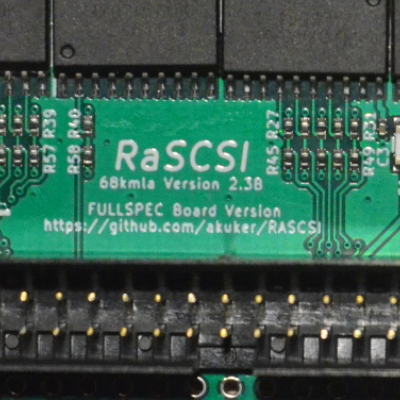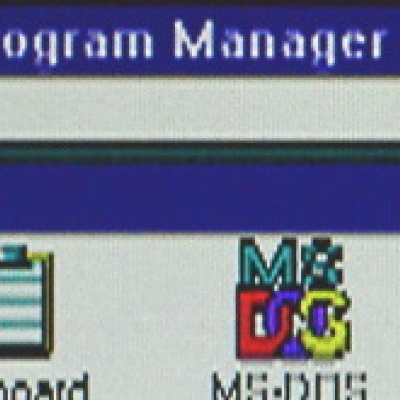Almost any modern PC is capable of recording sound. I mean, even the sound interfaces that are part of the mother board nowadays have microphone connectors as well as line-in connectors. This was different in the days of the Amiga when a PC by default could only beep. At least each Amiga came with stereo line-out connectors that allows it to playback audio, but unfortunately none came with audio inputs. To be able to record sound on your Amiga additional hardware needed to be purchased. This article describes one example of such hardware, the "sampling cartridge" for the Amiga.
The hardware
The TechnoSound Turbo hardware is a small box that has a 25 pin male sub-D on one end and two RCA audio connectors at the other end. The box is made such that when it is plugged into the Amiga's parallel port the box lies flat on the table. In my case I bought it at the time to use it with my Amiga 500 and later when I upgraded to the Amiga 1200 the TechnoSound still fitted perfectly and worked absolutely fine. It looks like this:
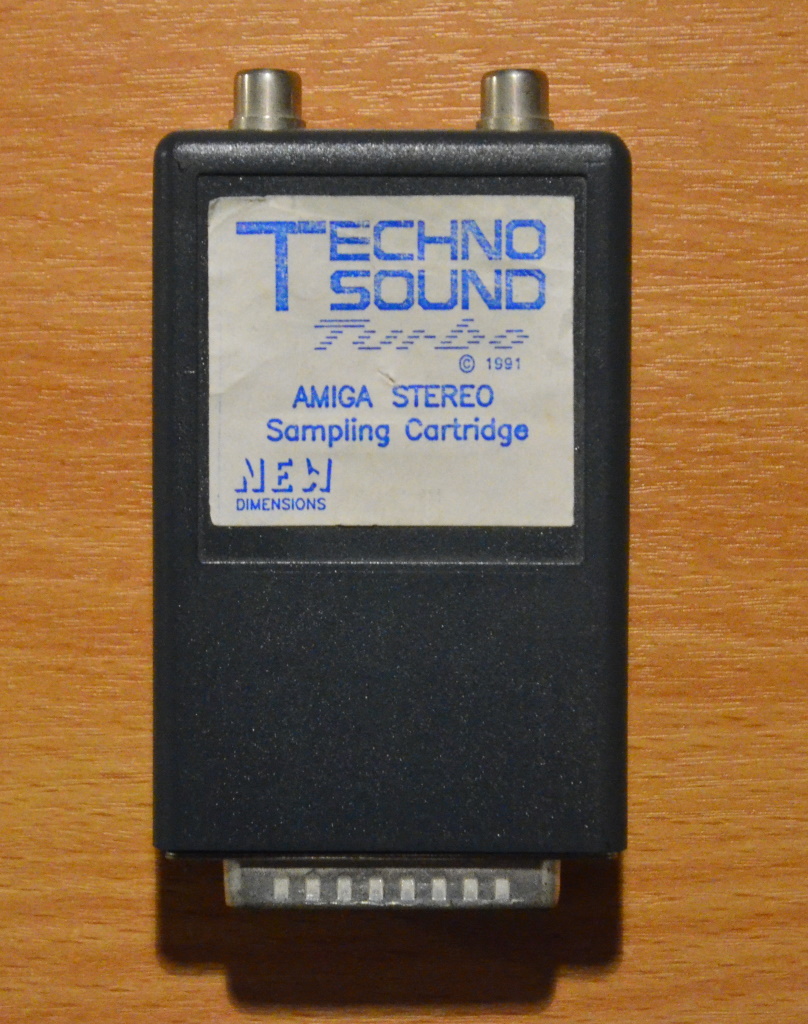
The label on the little box shows a date of 1991, however, when we open it and look at the circuit board it shows a date of 1990:
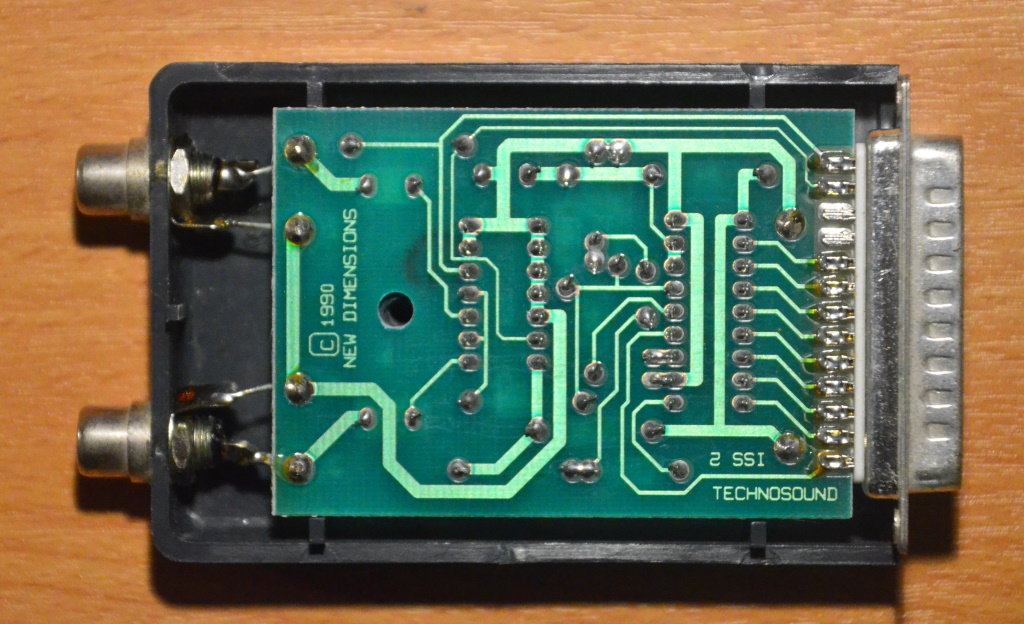
When we flip the board over to the component side we see the following:
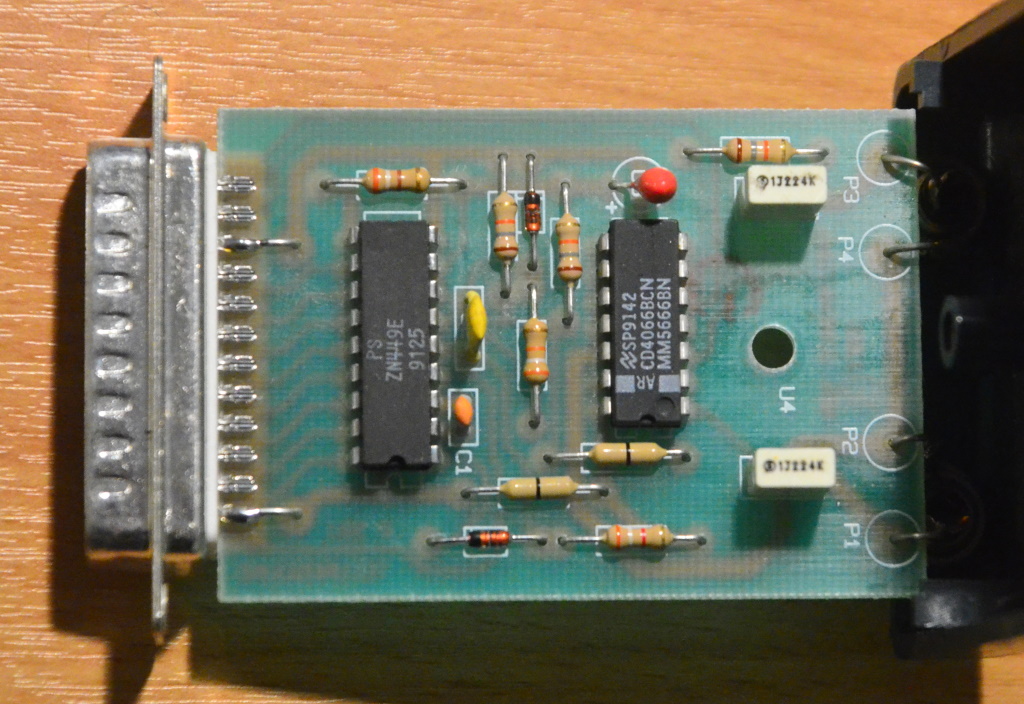
The circuit mainly consists of two integrated circuits; the ZN449E on the left and the CD4066CDN on the right. The ZN449E is the analogue to digital converter (ADC), which converts the level of the audio signal into an 8 bit value. This value is then read by the Amiga over the parallel port. Each time the Amiga wants a new value it toggles one of the lines on the parallel port, which then causes the ZN449E to convert a new value. This way the Amiga can control the samplerate used.
The ZN449E only takes a single audio signal. This is where the CD4066CDN comes in. It contains four switches and is used to connect either the left audio input or the right audio input with the analogue input of the ZN449E. This is also controlled by the Amiga via one of the parallel port lines. To create a stereo sample the software will run at twice the samplerate and first get a value for the left signal and then get a value for the right signal by using the CD4066CDN to switch between the channels. By constantly toggling between the two channels the Amiga will read a constant stream of values of which the odd values make up the left channel and the even values make up the right channel.
Requiring only a single ADC keeps the manufacturing costs low. The main downside to this method is that the left sample and the right sample are not taken at the same time. When the Amiga plays the stereo sample back it will play the left and right sample at the same time, which will cause a slight phase error between the two channels.
TechnoSound (V2.9)
Together with the hardware also came a disk with software. The software that came with my TechnoSound turbo was V2.9.
When it is started it opens up a separate screen with a large number of buttons and a large area in which it will display the waveform. It provides the usual cut/paste editing operations as well as disk load/save options using different file formats. The following image shows a screenshot of the program directly after starting:
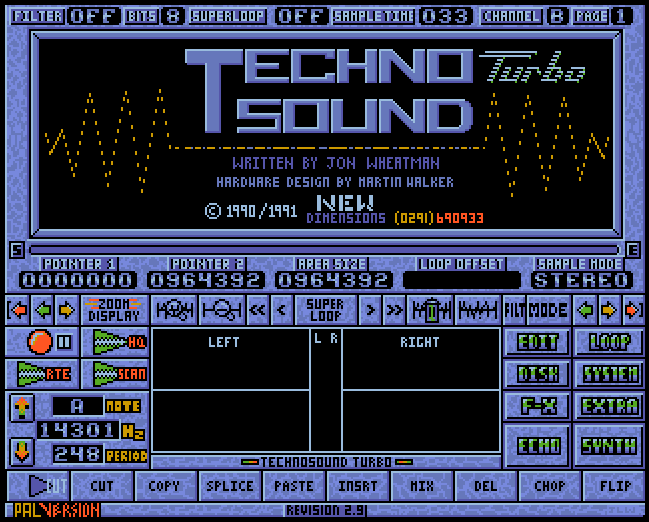
The software's party trick are the real-time audio effects. The Amiga records the audio coming in through the sampler, adds the real-time effect and plays the result back on the audio outputs. The effects are grouped in two menus: the "echo" menu has a number of different echo settings and the "synth" menu has a number of voice effects. At the bottom of this article I've placed a couple of short audio clips to showcase a few of these effects.
While these real-time effects were of limited use (to me at last - I bought the hardware to sample musical instruments to be used with ProTracker) they did help to sell the product. I remember visiting the "Benelux Computer Expo" in Eindhoven where the TechnoSound stand had a speaker setup and the salesman demonstrating the product constantly shouting "Exterminate! Exterminate!" using the "Dalek" setting on his voice. He could be heard from great distances. To me at the time it felt more like a gimmick rather than a useful feature.
Unfortunately I never really got on with the software, not at the time and not now. When a button is clicked there is no graphical feedback to show that the program noticed. With standard AmigaOS buttons you can see that they're being clicked, while these buttons are just pictures on the screen without any response or feedback to the click. Added to that is that the program does not change the mouse pointer into the "busy" pointer when an action takes a long time and you're regularly left wondering why nothing works. The program also seems to be incompatible with my Amiga 500 since after a few minutes of use part of the screen get corrupted.
The program allocates a large buffer at startup, which will be cleared so that it contains only silence. During recording the new audio samples will replace the samples of silence in the buffer. If you have recorded a short audio clip and immediately select to save to disk then the program will save the complete buffer to disk; your short clip followed by an amount of silence that depends on the size of the buffer it allocated. To save only the samples of the audio clip you each time need to carefully select the samples of the audio clip first, before selecting to save on disk.
TechnoSound (V3.52)
New Dimensions continued to develop the software they shipped with their hardware, making it more user friendly in the process. Version 3.52 from 1993 uses what looks like Intuition based menus and buttons and conforms more to the Commodore style guide. This can already be seen from the screenshot below:
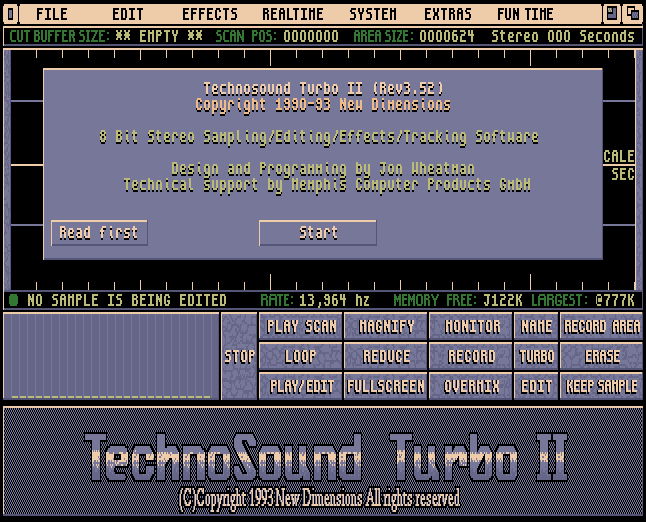
It is a pity that I did not get this version of the software with my sampler. While it still has a number of quirky things (like not showing a busy pointer when busy) it is considerably easier to use and has in this incarnation become a capable piece of software. The number of effects to be used on the recorded audio as well as the number of real-time effects has increased and during my brief usage to test it out for this article it worked well on my both my Amiga 500 as well as on my Amiga 1200.
Audio Master
Until ProTracker gained its own build-in sample editor, AudioMaster was my software of choice for editing samples. The screenshot below shows the main AudioMaster screen with my short stereo test clip from the examples section loaded:
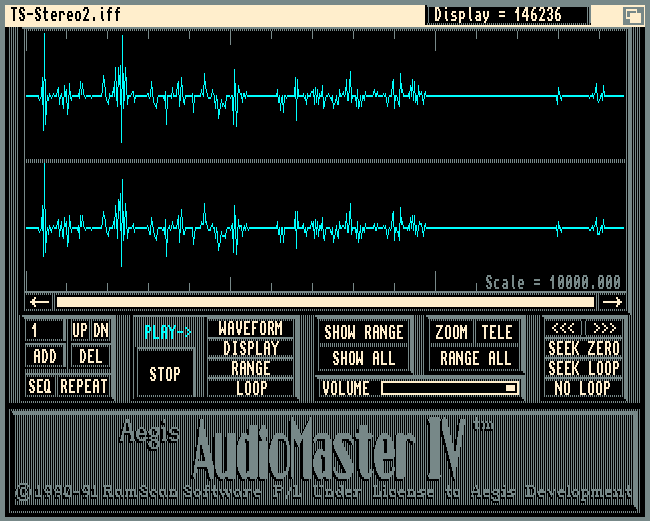
The program uses standard Intuition menus and buttons and the user interface works the same way modern audio editors (like Audacity) do today. Since all I needed was simple sample recording and editing, the ease-of-use of AudioMaster for me trumped the much larger functionality provided by the TechnoSound software.
AudioMaster contains a number of functions that are really useful when trying to create audio samples that are to be used as instruments. The "seek zero" function tries to find a zero crossing in the audio, which is a useful place to cut/paste without getting a "pop" or "tick" sound at the cut. The "seek loop" function helps with creating a sound that loops with itself, for example for creating something mimicking a synth's "string" type of instrument.
Examples
This first audio file is the original audio that was played back on an Ubuntu PC and sampled by the Amiga using the TechnoSound Turbo sampling cartridge:
I can only apologise for for the (intended) cheesiness of the sample!
The following audio files were recorded from the the audio output of the Amiga 500. Each of these files uses one of the TechnoSound V2.9 software's real-time effects:
| Menu | Effect | Sample |
| Echo | MegaEcho | |
| Echo | Reverb | |
| Echo | Room | |
| Synth | Legless | |
| Synth | Dalek |
 tech.jpg)
